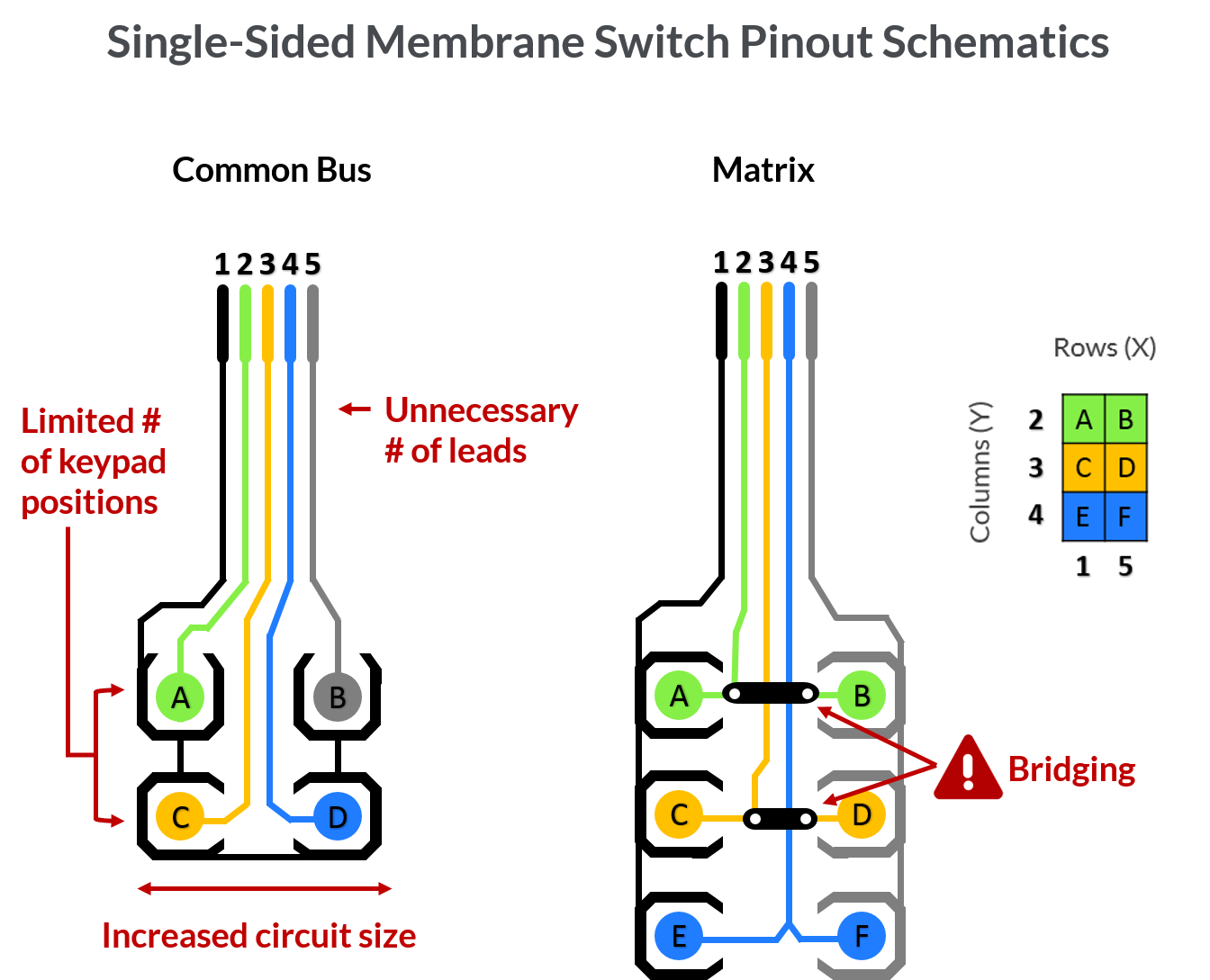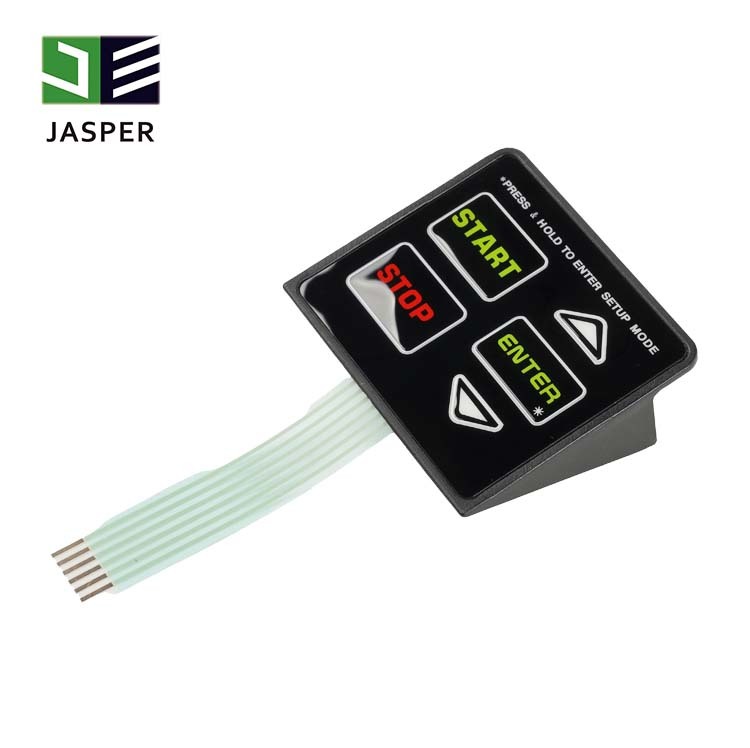The Manufacturing Refine Behind Membrane Layer Switch Over: What You Required to Know
The manufacturing process behind membrane layer switches over combines cautious style, material option, and high quality control. It starts with understanding the ins and outs of membrane layer switch design and proceeds through various phases, including material selections and printing strategies. Each phase plays a vital duty in guaranteeing functionality and durability. The intricacies of layer building and construction and the extensive screening criteria might expose understandings that are not promptly obvious. What lies beyond these foundational elements?
Comprehending Membrane Switch Design
Although membrane switches may show up basic at very first look, their style entails intricate factors to consider that guarantee functionality and longevity. The style procedure starts with a comprehensive understanding of customer demands, consisting of the interface's desired application and ecological aspects. Functional designs is a vital component, as the layout has to help with ease of usage while ensuring that responsive feedback meets individual expectations.Moreover, the layering of components, such as visuals overlays, adhesive layers, and conductive traces, have to be precisely engineered. membrane switch. This layered arrangement not just influences the switch's responsiveness but also affects its durability. Focus is provided to the sealing methods employed to shield against dampness and dust, which could endanger performance. Additionally, design factors to consider encompass appearances, where color design and aesthetic quality boost customer experience. Eventually, the design of membrane switches equilibriums performance, customer experience, and resilience, making certain that they meet the needs of different applications properly
Products Made Use Of in Membrane Change Production
When picking products for membrane layer switch production, it is important to ponder both performance and resilience. The main materials include polyester and polycarbonate movies, which supply flexibility and toughness. These movies are often covered with adhesive to assure proper bonding to substrates. Conductive inks, generally composed of silver or carbon, are crucial for developing electrical connections within the switch, enabling trustworthy operation.Additionally, a protective layer, such as a difficult layer, is regularly put on enhance scrape resistance and durability. The selection of backing product, such as acrylic or foam, can substantially impact the button's tactile feel and total user experience. Various ecological elements, including temperature and moisture, ought to direct product choice to ensure peak efficiency in specific applications. Inevitably, the ideal combination of materials adds to the membrane layer button's capability and life expectancy, making notified selections essential for manufacturers.
The Printing Process: Creating Graphics and Text
The printing process in membrane switch manufacturing plays a considerable duty in producing premium graphics and message. Different visuals style methods are used to ensure aesthetic allure and functionality, while cautious ink selection methods are important for toughness and efficiency. Understanding these components is basic for attaining finest results in membrane layer button design.
Graphic Style Techniques
Graphic design methods play a necessary duty in the printing process of membrane buttons, as they specify just how graphics and message will inevitably appear on the end product. Efficient visuals design entails the strategic use of layouts, font styles, and shades to improve readability and aesthetic allure. Designers usually make use of vector graphics for scalability, making certain that pictures remain sharp at numerous sizes. Additionally, interest to comparison and alignment is crucial, as it influences individual interaction and aesthetic quality. The consolidation of branding aspects, such as logos, need to be taken care of with like preserve brand stability. Overall, thoughtful graphic style methods add considerably to the performance and appearance of membrane layer buttons, impacting individual experience and item efficiency.
Ink Option Approaches
Choosing the appropriate ink is crucial for achieving the desired aesthetic top quality and sturdiness in membrane layer button manufacturing. Numerous ink kinds are made use of, including solvent-based, water-based, and UV-curable inks. Each type provides unique features, such as resistance, flexibility, and adhesion to environmental factors. Solvent-based inks are commonly preferred for their resilience and lively colors, while water-based inks are more eco-friendly yet may have restrictions in adhesion. UV-curable inks supply quick treating and durable efficiency. In addition, color matching methods assure that the chosen inks straighten with style specs. Inevitably, the choice of ink must think about factors such as application technique, substrate compatibility, and end-use requirements to achieve superior lead to membrane layer button graphics and message.
Layer Building And Construction and Assembly

Product Option Refine
A careful selection of materials is essential in the manufacturing process of membrane layer buttons, as it directly influences capability and durability. The key materials utilized include polyester, polycarbonate, and various conductive inks. Polyester is often preferred for its superb resistance to chemicals and abrasion, making it ideal for extreme atmospheres. Polycarbonate, on the various other hand, supplies exceptional clarity and effect resistance, which is valuable for applications requiring presence and robustness. Conductive inks, generally made up of silver or carbon, are essential for creating dependable electrical paths. Additionally, the choice of glue products affects the general honesty of the button - membrane switch. Reviewing factors such as environmental direct exposure, responsive comments, and aesthetic demands overviews producers in choosing the most effective products for their particular applications
Layer Bond Methods
Sticking layers in membrane button building and construction is a vital pop over to this site procedure that guarantees capability and long life. Various bond techniques are employed to secure ideal bonding between layers, which normally consist of the usage of adhesives, warm, and stress. Pressure-sensitive adhesives (PSAs) are generally utilized for their ease of application and prompt bonding capabilities. Furthermore, thermal bonding methods can be used, where warm is utilized to turn on sticky residential or commercial properties, safeguarding a strong bond. The selection of bond approach mostly depends upon the materials entailed and the particular application demands of the membrane switch. Appropriate positioning and consistent application of adhesives are crucial to protect against issues, safeguarding the button operates properly throughout its desired lifespan.
Quality Control Procedures
Guaranteeing top quality control during the layer building and construction and setting up of membrane layer buttons is essential for preserving efficiency and integrity. This process generally includes a number of essential steps, consisting of comprehensive evaluations at each stage of production. Suppliers make use of advanced screening methods, such as peel tests and bond analyses, to verify the integrity of layer bonds. Additionally, aesthetic inspections are conducted to recognize any type of issues in printing or material incongruities. Environmental conditions, such as temperature and moisture, are carefully kept track of to assure ideal treating and bond. Regular calibration of tools assists maintain accurate manufacturing criteria. By applying these quality assurance procedures, makers can considerably reduce the danger of item failure, assuring that the last membrane layer changes fulfill the needed specs and customer assumptions.
Examining and Top Quality Control Procedures

Technologies in Membrane Layer Switch Over Innovation
As innovations in technology remain to progress, membrane layer buttons are taking advantage of ingenious advancements that enhance their functionality and customer experience. One remarkable development is the combination of capacitive touch technology, which permits even more responsive and intuitive individual interfaces. This shift not only enhances aesthetics but likewise lowers mechanical deterioration, prolonging the life-span of the switches.Additionally, improvements in graphic overlay materials have actually resulted in boosted resilience and resistance to environmental elements such as wetness and UV light. These products currently use enhanced clearness and illumination, further raising the aesthetic appeal.Furthermore, the incorporation of smart technology is transforming membrane switches over right into interactive control board, allowing connectivity with IoT tools. This connectivity fosters a smooth customer experience, leading the method for applications in different sectors, from medical care to customer electronics. Jointly, these technologies position membrane switches over as critical components in modern tool style.
Often Asked Inquiries
How much time Does the Membrane Change Production Process Take?
The duration of the membrane layer switch manufacturing process can vary considerably. Factors such as intricacy, materials used, and production quantity influence timelines, with typical production varying from a few days to several weeks for completion.
What Are the Typical Applications for Membrane Switches?
Membrane layer buttons are generally made use of in numerous industries, consisting of automobile controls, home appliances, clinical tools, and customer electronic devices (membrane switch). Their flexibility and resilience make them perfect for applications requiring user-friendly user interfaces and dependable performance in diverse atmospheres
Can Membrane Switches Over Be Customized for Particular Requirements?

What Is the Life expectancy of a Regular Membrane Change?
The lifespan of a regular membrane layer button differs, however generally, it varies from 1 to 5 million cycles. Factors such as use, atmosphere, and worldly quality considerably affect sturdiness and overall efficiency over time.

Are Membrane Changes Ecologically Pleasant?
The environmental kindness of membrane switches differs. Some products utilized might not be recyclable, while others can be environmentally friendly. The overall effect depends upon manufacturing materials and practices, demanding mindful factor to consider throughout option and disposal. The manufacturing process behind membrane switches combines cautious style, material choice, and top quality control. It begins with comprehending the complexities of membrane layer button style and progresses via numerous stages, consisting of material selections and printing methods. When choosing products for membrane button production, it is necessary to ponder both efficiency and longevity. A cautious option of products is important in the production procedure of membrane layer buttons, as it straight affects capability and toughness. The option of attachment method mainly depends on the materials included and the specific application important source demands of the membrane button.